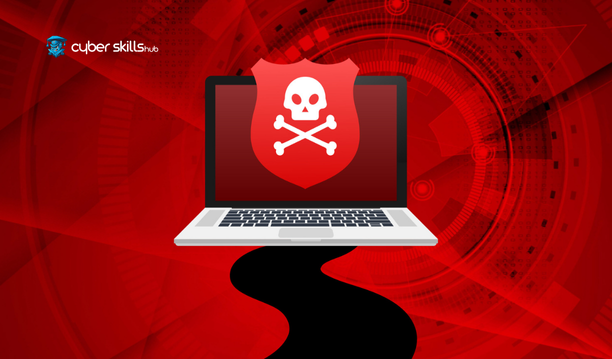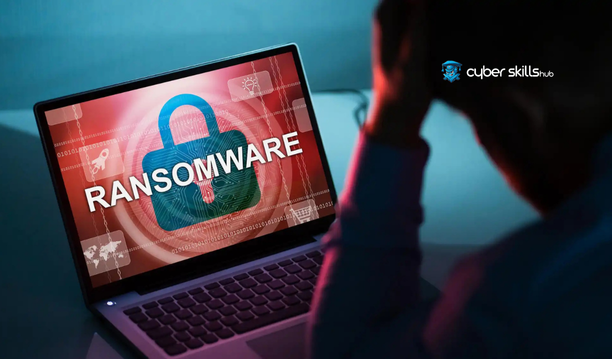Currently Empty: $0.00

Sneaking through the cyber world like a kidnapper, ransomware captures data and serves as a painful reminder that we are not safe.
Asinformation security professionals, we need to be vigilant against this malware that finds and exploits the weakest point of our line of defense; we must be proactive in prevention, detection and response.
Meaning of the Ransomware Threat
Ransomware is a type of malicious software in which cybercriminals infiltrate systems, hold data hostage through encryption and demand a ransom from victims in exchange for decryption. This threat vector usually manages to infiltrate systems through a successful phishing attack, exploiting vulnerabilities or user errors. With victims at risk of facing serious consequences such as data loss, operational disruptions and damage to brand reputation, ransomware attacks have become one of today’s most critical cybersecurity issues.
Fundamentals of Ransomware Attacks
Ransomware is malware that encrypts users’ data and demands a ransom.
Ransomware incidents cause global financial losses and threaten the cybersecurity ecosystem.
This software often infiltrates through poor network security, outdated systems or user errors, making data inaccessible.
Corporate and individual users can be protected against this threat with a strong cyber defense strategy and continuous training.
Ransomware Types and Ways of Propagation
Ransomware is classified into different types according to domain, and their propagation strategies vary.
- Locker Ransomware: Completely blocks access to the user’s device.
- Crypto Ransomware: Encrypts important files, but leaves access to the device open.
- Scareware: Convinces the user to pay a ransom (ransom payment) with fake security warnings.
- Doxxing Ransomware: Demands a ransom by threatening to expose personal data.
- RaaS (Ransomware as a Service): Offers a subscription model for attacks.
- Double Extortion Ransomware: Pose the threat of both data encryption and data leakage. Phishing attacks are the most common way it spreads and social engineering techniques are often used.
Ransomware also spreads by exploiting vulnerabilities such as weak passwords, remote desktop protocols (RDP) left open, and outdated systems.
Impacts of Ransomware Attacks
Ransomware attacks cause serious damage to organizations and individuals, causing financial losses as well as operational disruptions. The encryption of critical data hinders business continuity and can cause services to stop. Particularly in sectors that provide vital services, such as healthcare and finance, attacks pose great risks to society.
Organizations can also suffer reputational damage and damage customer trust, resulting in long-term financial losses. Leaking internal data can lead to serious fines under laws such as GDPR and KVKK. For individual users, the loss or theft of personal data can have a negative impact on their lives, so the effects of ransomware attacks are deep and widespread, with financial and psychological dimensions.
To mitigate the effects of ransomware attacks, it is important to understand the basics of information security. For more information on this topic, see ‘What is Information Security? Basics and Tips you can take a look at our article.

Costs to Companies
Ransomware attacks impose two main costs on companies : financial and reputational.
- Ransom Payments: Companies may have to pay high ransoms to regain access to their data.
- Disruption of Business Continuity: Reduced production and service efficiency due to an attack, leading to revenue losses.
- Data Recovery and System Rebuilding Costs: There are significant costs involved in recovering encrypted data and rebuilding systems.
- Legal Sanctions and Penalty Costs: Depending on the data breach, possible sanctions and penalties under regulations such as KVKK, GDPR may cause economic damages.
- Loss of Reputation and Trust: Loss of customer trust and damage to brand image can lead to long-term revenue losses.
- Insurance Premiums Increase: In the wake of ransomware attacks, companies’ cyber insurance premiums may increase.
Investments in recovery and prevention can run into millions of dollars, depending on the scale of the attack.
For businesses, these costs threaten sustainability and growth not only in the short term but also in the long term.
Impact on Personal Data Security
Ransomware attacks pose a serious threat to the personal data security of individuals and organizations.
- Breach of Confidentiality: The contents of encrypted data can be examined by attackers and sensitive information can be disclosed.
- Identity Theft: Attackers can use the personal information they obtain to commit other crimes, such as fraud.
- Financial Losses: Ransom payments can cause a significant reduction in the financial resources of an individual or organization.
- Data Loss: Whether or not a ransom is paid, leakage or permanent loss of data is possible.
- Legal Consequences: Failure to comply with data protection obligations may result in legal penalties, and attackers may exploit it, resulting in the permanent compromise or loss of personal data.
Depending on the extent of the damage, individuals may have to expend financial and time resources to restore data privacy. Ransomware attacks are just one example of cybercrime. For more information on cybercrime in Turkey, see our article ‘Cybercrime: The Most Common Internet Crimes in Turkey‘ article.
Protection Methods
You can take the first precaution against ransomware threats by keeping your computer network constantly updated and applying security patches quickly. High-level encryption protocols and secure network configurations are essential to thwart potential attacks.
Education and awareness programs can make users aware of social engineering tactics such as phishing and malicious links. In addition, regular data backup and the implementation of multi-factor authentication systems play a vital role in maintaining data integrity.
Finally, proactive monitoring and incident response plans enable early detection of threats and the development of effective response strategies.
Importance of Security Software
Security software is an essential component for preventing cyber threats. The foundation of protection from malware such as ransomware is a strong security software installation.
Each security software includes mechanisms that can instantly detect and block attempts to infiltrate systems. Advanced behavioral analysis methods enable the detection of anomalous behavior, while sandbox technologies isolate potential threats, allowing them to be analyzed in a space separate from the real environment. In this way, security software forms one of the most important lines of defense to detect and block known and previously unidentified ransomware attacks early on.
Security software also provides regular automatic updates to correct potential vulnerabilities, such as configuration errors or software update failures. This mission-critical software provides system administrators and security professionals with comprehensive reporting and alerting capabilities, enabling continuous security monitoring.
Modern security software not only performs threat detection and prevention functions, but also has advanced features such as data leak detection and content isolation to help reduce the potential damage caused by malware. Effective security software plays a decisive role in creating a deterrent shield against ransomware attacks that can harm companies and individual users, minimizing potential costs and data loss.

Education and Awareness
Cybersecurity training makes individuals aware of phishing and social engineering. Sinceransomware attacks often start with these methods, users’ ability to recognize dangerous emails and links is improving.
In particular, given the high rate of data breaches due to user error, employees should receive ongoing training. This should include teaching basic security procedures, developing skills to recognize malicious email campaigns and adopting secure password practices. As critical as the technologies used to stop attacks is the effective use of these technologies by employees.
Through simulations and drills, employees can learn how to react in real-world scenarios. These practice-based trainings enable users to understand hazardous situations and quickly take correct interventions. In addition to theoretical knowledge, practical application contributes to the development of instinctive reflexes.
Finally, it is important to make security culture part of the organizational fabric through regular awareness campaigns. Keeping employees informed about cyber threats and their potential consequences keeps them up to date on current threats and best protection methods. This continuous training and awareness-raising has the potential to provide the highest level of protection, strengthening the human factor as well as the firewalls of organizations.
Post Attack Steps
The first thing to examine immediately after a ransomware attack is the extent of the damage and the systems affected. Backup plans must be put in place, emergency teams activated, and network isolation procedures quickly implemented to prevent the spread of damage. During this phase, forensic procedures should also be employed to prevent sensitive data leaks.
In order to minimize the impact of the attack, it is extremely important to inform the relevant parties using immediate communication channels. It is also critical to document the incident in detail and prepare an incident report that can be used as a reference for similar situations in the future.
First Response Measures
Affected systems should be isolated immediately.
When a ransomware threat is detected, the affected devices should be immediately removed from the network. Isolation of these systems is vital to prevent further spread of damage and maintain control over the affected systems. This limits the scope of the attack and prevents further damage to data or systems.
Backups should be accessed quickly.
Check that all systems and data have secure and up-to-date backups. When faced with data loss, backups can be lifesavers and organizations should be able to continue operations or at least recover critical data from these backups.
All relevant teams should be informed.
All relevant departments , including IT, security, legal and crisis management teams, must be quickly notified and coordinated. This cross-stakeholder coordination allows for effective crisis management and mitigation.
Decisive and transparent communication must be established.
All employees, management and, if necessary, customers must be informed in clear and understandable language about the attack and the measures taken. Crisis communication plans should be put in place and implemented decisively to manage these situations correctly.
Professional Support and Improvement Processes
Contacting an expert cybersecurity team in the aftermath of a ransomware attack will help minimize the potential damage. Professional support is critical to quickly and effectively mitigate the effects of the attack.
While damage assessment is being carried out, remediation processes should be reviewed. Recovery planning and implementation should be meticulously managed by experts.
After the attack, the organization’s business continuity plans should be activated and systems and applications should be gradually brought online. In this process, protecting data integrity and making the system completely secure is a priority.
Organizations should examine the attack to identify vulnerabilities and implement regular security updates to close them. An infrastructure equipped with advanced protection systems plays a vital role in protecting personal data and intellectual property. At the same time, raising employee awareness through training programs and adopting ‘best practices’ reduces the risk of repeated attacks.
Frequently Asked Questions About Ransomware
What is ransomware?
Ransomware is malicious software used by cybercriminals to infiltrate systems, encrypt data and offer to decrypt it for a ransom.
How do ransomware attacks spread?
These attacks are usually carried out through phishing emails, exploiting vulnerabilities or user errors. Weak passwords and outdated systems are also common ways of propagation.
How can I protect myself from ransomware attacks?
Prevention methods include using strong security software, continuous system and software updates, and raising employee awareness through training programs.
What are the first steps after a ransomware attack is detected?
First steps include isolating affected systems, checking backups, informing all relevant teams and establishing transparent communication.
Should I seek professional support after a ransomware attack?
Yes, a professional cybersecurity team can help mitigate the effects of an attack quickly and effectively. It is also critical for managing remediation processes and closing vulnerabilities to prevent future attacks.
How much do ransomware attacks cost companies?
Costs can include ransom payments, disruption to business continuity, data recovery costs, legal sanctions and reputational damage. These costs can cause huge economic damage to companies, not only in the short term but also in the long term.







